This post may contain affiliate links. Please read our disclosure policy.
For a juicy, sweet melon every time, use these super simple tips and tricks on how to pick out a good watermelon!

Who Doesn’t Love Watermelon?!
In the summertime, I’m especially obsessed with this sweet and refreshing fruit, and I often think about how wonderful life would be if I had it in my fridge all year long!
Over the years, I’ve learned a few tips and trips for picking out the juiciest watermelon and I wanted to make sure you knew what they were so you could use them too.
Once you have it chosen, I also have tips for cutting watermelon.
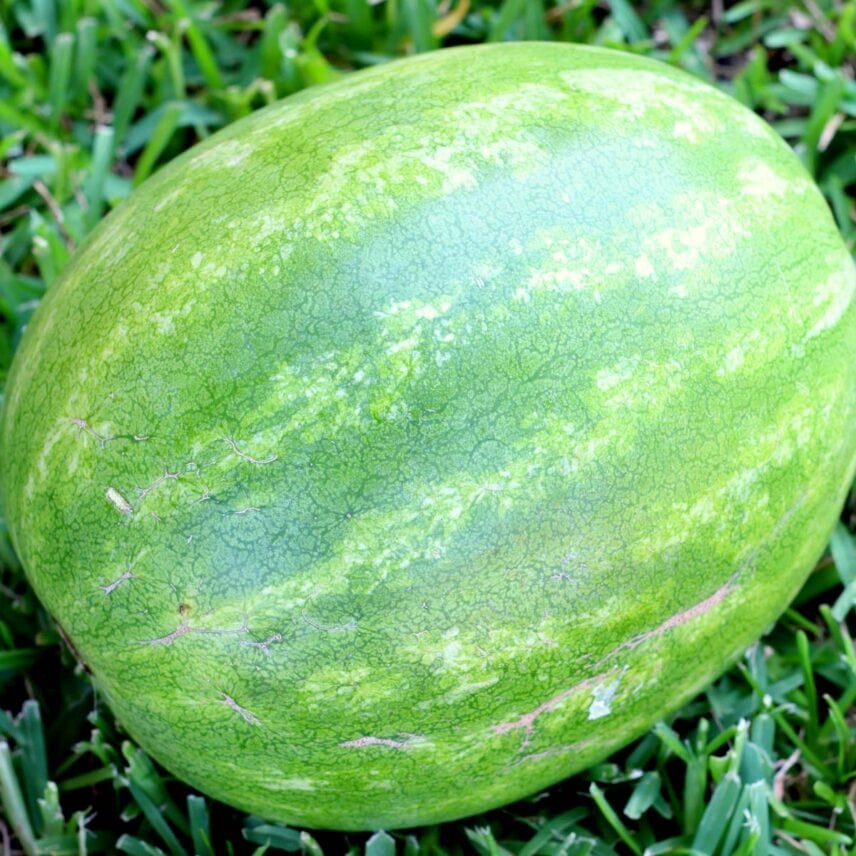
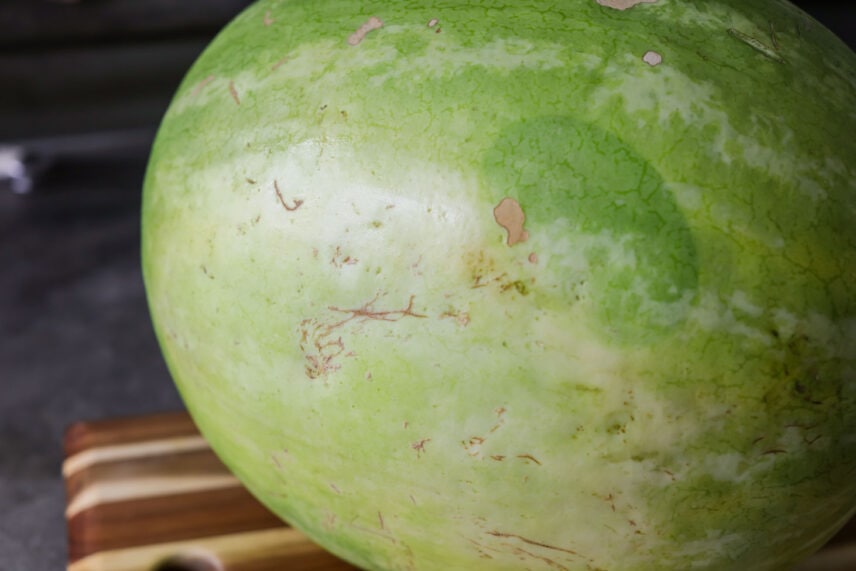
How to Pick a Watermelon
For a ripe watermelon, keep these tips in mind:
- Look for the large yellow spot (field spot) on the underbelly of the watermelon. This is where the watermelon was laying in the field. Make sure it’s a decent size and has a nice creamy yellow spot to ensure ripeness.
- Give it a good thump. Give it a tap or knock to make sure your perfect melon has a hollow deep sound.
- Dull outside. Make sure the outside of the watermelon looks dull and not shiny. A shiny watermelon means it’s not ripe. The green stripes should be a deep dark green while the white strips should be a light yellow/cream.
- Lift it up. Make sure it’s heavy for its size, which means it has a ton of water in it (what you want!!)
- Nice oval shape. A uniform shape watermelon shows that it got the perfect amount of sunshine and water.
- Bee stings and white scars (sugar spots). Look for these little guys. These little marks show that it’s sweet enough that even the bees were trying to get to the inside. The stings look like brown lines or dots on the melon.
- Sweet aroma. The best watermelons have a sweet aroma. Scratch a bit off the green skin. You should be able to smell a sweet aroma through the rind of the melon.
- Tendril. Most watermelons at the grocery store will not have a tendril, but if you are choosing one from a farmers market or are lucky enough to have one growing in your garden, locate the curly tendril, where the melon is/was connected to the vine. The tendril should be dried out. If it still has a green stem, then the melon is not ripe.
- Avoid watermelons that are shiny, and have soft spots, bruises, dents, or irregular bumps.
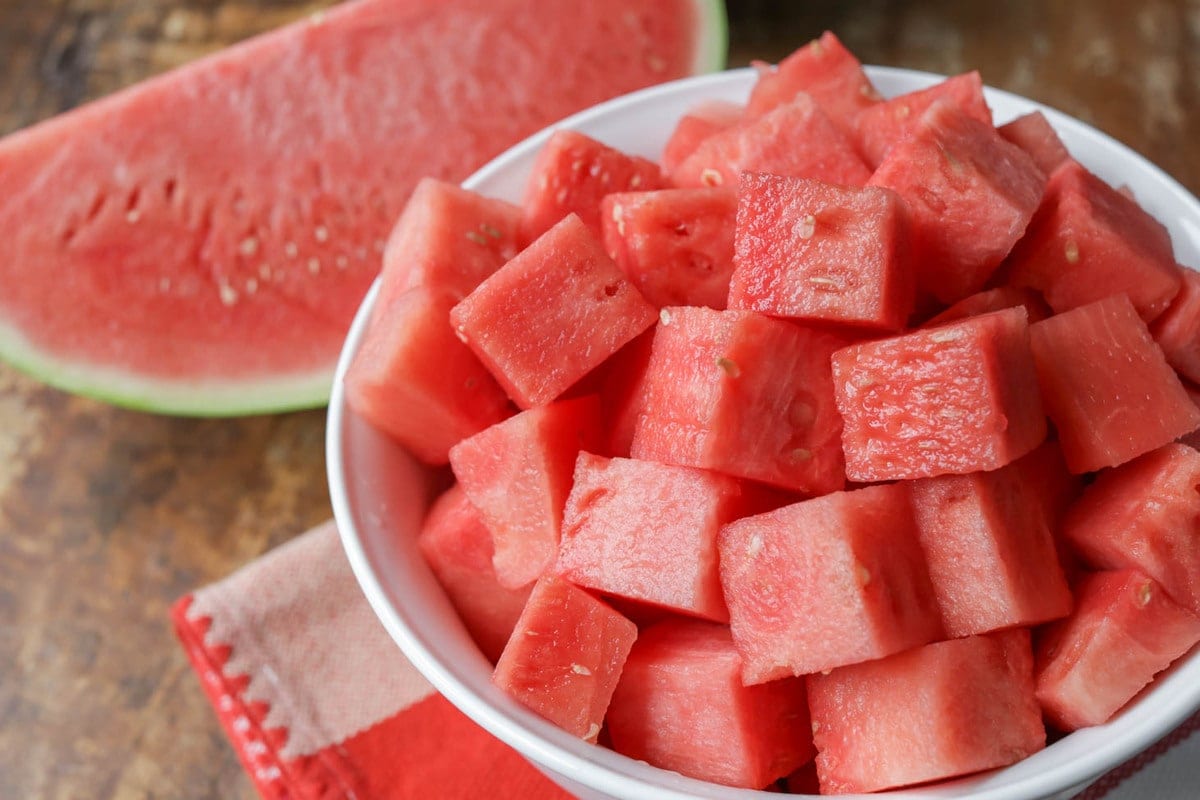
Complete the Meal
- MAIN DISHES: Hot Dogs in Crockpot, Baby Back Ribs, Best Hamburger Recipe
- DESSERTS: Dole Whip, Root Beer Float Ice Cream Cake, Strawberry Shortcake
- More fruit recipes: Fruit Salad Recipe, Fruit Tart, Fruit Pizza, Watermelon Smoothie, Watermelon Juice
More collections: Summer Drinks, Summer Side Dishes, Summer Salads
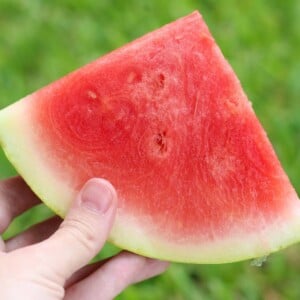
How to Pick Out a Good Watermelon
Ingredients
- 1 watermelon
Instructions
- Look for the large yellow spot on the underside of the watermelon. This is where the watermelon was laying in the field. Make sure it's a decent size and has a nice yellow patch.
- Give it a good thump. Give it a tap or knock, you want to make sure it has a hollow sound.
- Dull outside. You want to make sure the outside of the watermelon looks dull and not shiny. A shiny watermelon means it's not ripe.
- Lift it up. You want to make sure it's heavy for it's size, which means it has a ton of water in it (what you want!!)
- Nice oval shape. A uniform-shaped watermelon shows that it got the perfect amount of sunshine and water.
- Bee stings and white scars. Look for these little guys. These little marks show that it's sweet enough that even the bees were trying to get to the inside. The stings look like brown lines or dots on the melon.
- Sweet aroma. Scratch a bit off the green skin. You should be able to smell a sweet aroma through the rind of the melon.
- Tendril. Most watermelons at the grocery store will not have a tendril, but if you are choosing one from a farmers market or are lucky enough to have one growing in your garden locate the curly tendril, where the melon is/was connected to the vine. The tendril should be dried out. If it still has a green stem, then the melon is not ripe.
Nutrition information is automatically calculated, so should only be used as an approximation.
Recipe FAQ
Watermelon Size?
- When cut into ¾ inch wedges, a medium 20-pound watermelon can produce 66 pieces. Divide 66 by the number of pieces you think your guests will eat. I find people eat an average of 3 slices, so 22 guests.
How to serve watermelon?
- If the perfect watermelon is cut into triangles, arrange them on a platter.
- If I have cubes of melon, serve them out of a large bowl or a hollow watermelon rind.
- Another thing we like to do for the Fourth and during the summer is making Watermelon Juice!
keep watermelon cool outside?
- Whether whole or cut, keep the watermelon in a cooler with ice. When it’s time to serve it, place some ice in a bowl and then nestle the bowl of cut watermelon into the ice.
How to store an uncut watermelon?
- Keep the uncut melon at room temperature for 1-2 weeks, or in the fridge for 7-10 days.
How to store cut watermelon?
- If you only slice a portion of the ripe melon, then tightly wrap the uncut portion with plastic wrap and store it in the fridge for 4-5 days.
- Cut watermelon cubes can be stored in an airtight container in the fridge for 2-3 days. Drain excess liquid before serving.
Can I freeze watermelon?
- Store cut watermelon in the freezer to use in smoothies, sorbet, or gazpacho.
- Remove the seeds from the chunks and flash-freeze them.
- Line a pan with parchment paper and arrange the cut melon evenly over the pan.
- Freeze until solid, then transfer to a freezer-safe container. It can be kept for 3-6 months.
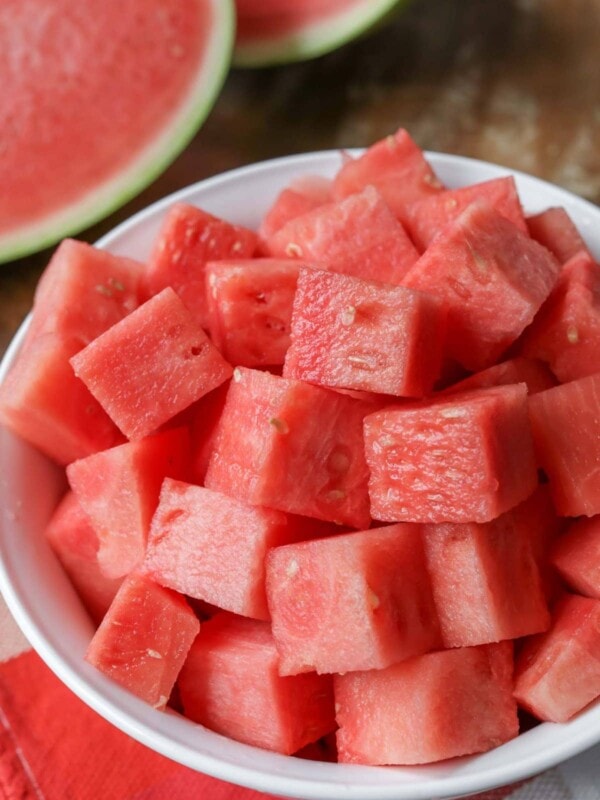
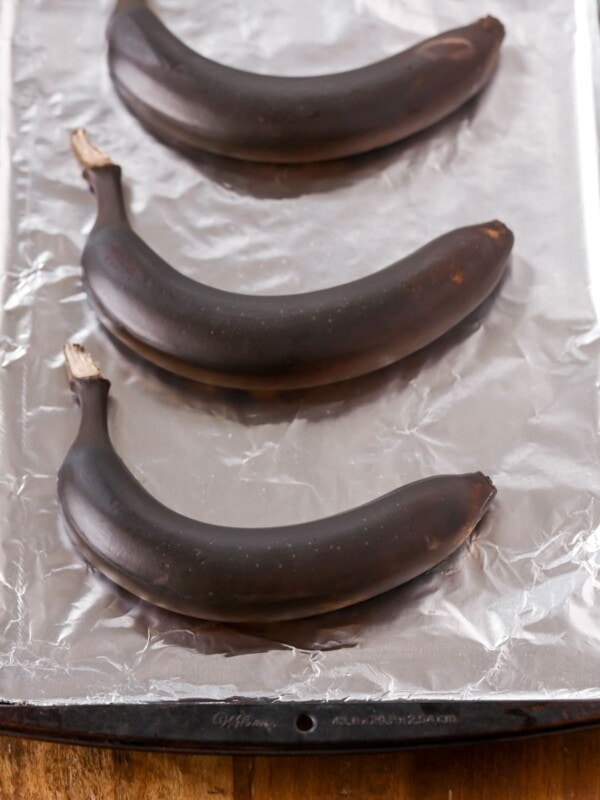
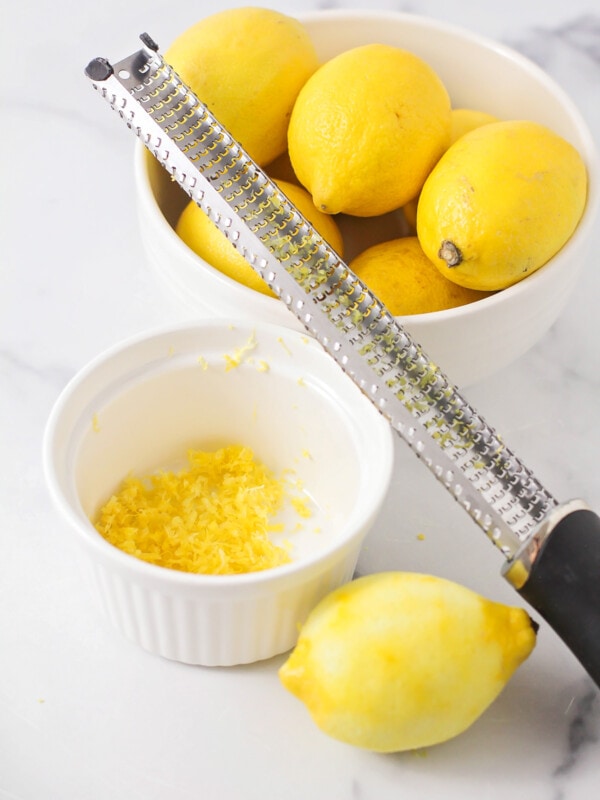
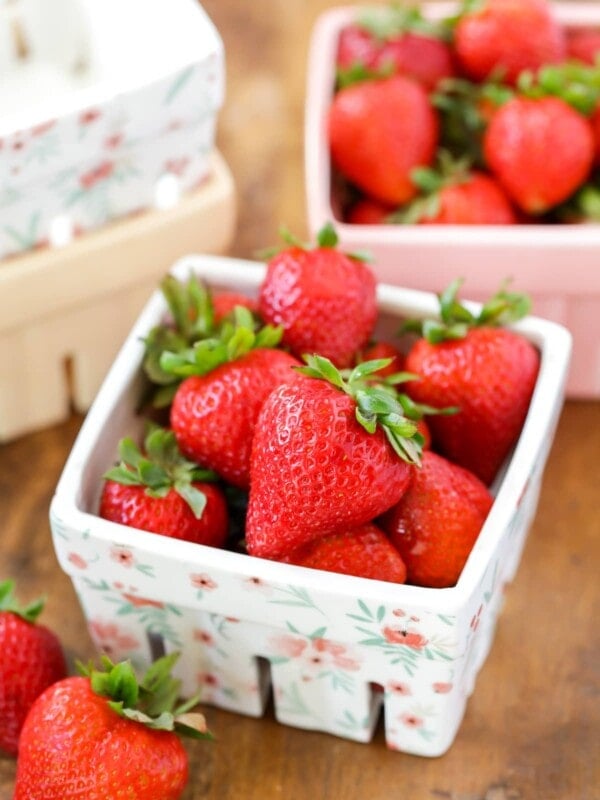









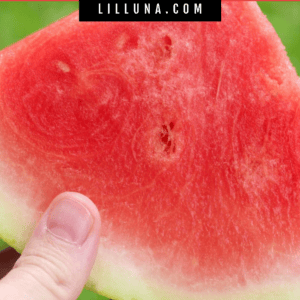
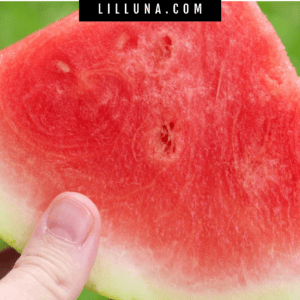
Thank you for the tip on “HOW TO PICK A GOOD WATERMELON.” For me, it’s always been “hit or miss,” but now I believe I’ve “graduated!”
I use Cook’n software to store all my recipes and would like to add some of yours (with proper credit). Before you say “NO,” feel free to see my cookbooks/recipes to see how I give credit to the cook. They are available (and free to copy) at:
http://www.dvo.com/cookn/bobf77845
Will I have your permission to use some in my cookbooks?
I have hard time determining weight or use the knocking method, but I always look for the bee stings and sun spots. I rarely choose a bad melon.